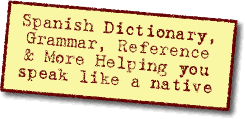Ask a Question(Create a thread) |
|
|||||||
Informative WritingTalk about anything here, just keep it clean. |
 |
|
|
Thread Tools | Display Modes |
|
#1
|
||||
|
||||
|
For English class - have to write an informative essay. due tomorrow. worth 30 points. I hope to get a perfect.
My topic: How to write Chinese characters correctly Please check for grammar, spelling, and punctuation errors. Check for any other errors. more directions: Explain how to do something in as many paragraphs as you need, but the length should be at least 1 1/2 - 2 pages (I'll take care of that) and double spaced, 12 font (I will take care of these too). Include an introductory and concluding paragraph of at least 5 typed lines each (don't worry about this, I will take care of it). The body can include a paragraph for each step of the process you are explaining. Be sure to define terms as needed or to provide descriptions as needed for your reader. Other: · No illustrations are allowed. · The underlined statement (as you can see, the very first sentence) is the thesis statement. My teacher said it is a good one, but if you think there is a better one please feel free to suggest a better thesis statement. Here goes. this is my essay: If you are interested in the Chinese language, then learning how to read and write Chinese characters correctly is essential. It is important to know the order of how to write a character. There are certain kinds of strokes, the way you write them, and the order you should do to make a whole character. To write certain characters, there is a certain order in the strokes that are essential in writing the correct way. First of all, before you actually start writing characters, you must learn what pinyin is. Pinyin is the name system that is used to transliterate Chinese words into the Roman alphabet. It is used to make learning Chinese easier. It is important to remember that the letters in pinyin does not always correspond with the English pronunciations. There are initials and finals that do not sound like the English versions and some combinations are not in the English language. When you know what pinyin is and how to pronounce a word, you can start learning how to write a character. There are 8 basic forms of stroke types. The first kind is a simple dot, diăn. The second kind is héng, a horizontal stroke written from left to right. The third stroke is shù, a vertical line written from top to bottom. The fourth stroke is gōu, a hook appended to other strokes, like héng, for example. Tí, the fifth stroke, is a diagonal stroke, rising from left to right. Pĭe, the sixth stroke, is a diagonal stroke, falling from right to left. Duán pĭe is a short diagonal stroke, similar to pie. The last and eighth stroke is nà, is a falling diagonal stroke, written from left to right. Writing characters in the correct order is essential for the character to look correct. Two basic rules are followed – top stroke before bottom stroke, and left stroke before right stroke. These rules conflict whenever one stroke is to the bottom and left of another. Most Chinese characters are combinations of simpler, component characters. Usually the two parts are written at top and bottom or left and right. Now that you know the basic strokes and the order they should be in, you are ready to write some easy characters. To write nĭ, meaning “you”, you first write pie. Then it is shù, connecting to pie, in the middle of it. The left part is a radical, and in this case it means person. Now you will write the right part of the character. First stroke is duan pie, then heng gou – a horizontal line then a hook attached to it. Then under this will be shù gōu. It is in the middle and the “wings” are diăn, at the right, and duán pĭe, at the left. To write sān, meaning the number 3, it is quite easy. It consists of 3 horizontal strokes. First you start with a horizontal stroke at the top. In the middle, the horizontal stroke is shorter than the one above it. Next, the final stroke is longer than the two strokes above it. The Chinese characters for 1 and 2 are also very easy. Yī, 1, is just one horizontal stroke. Er, 2, is two horizontal strokes, with the top stroke shorter than the stroke below it. There are two types of Chinese writing, simplified Chinese characters, and traditional Chinese characters. Traditional characters are much more complicated than the simplified ones, and I recommend learning the simplified characters instead, although the traditional characters show more meaning, because they look more like the original written way. Learning the Chinese language is hard yet fun, and it is something that will be useful if you want to read Chinese stories and books, and write to your friends in China. Last edited by Jessica; February 12, 2009 at 08:00 PM. |
|
#2
|
||||
|
||||
|
Quote:
|
|
#3
|
||||
|
||||
|
thanks
 but I printed mine out...and it's too late to change them but I printed mine out...and it's too late to change them 
|
 |
«
Previous Thread
|
Next Thread
»
| Link to this thread | |
|
|
|||||||
All times are GMT -6. The time now is 11:30 PM.








 Linear Mode
Linear Mode

